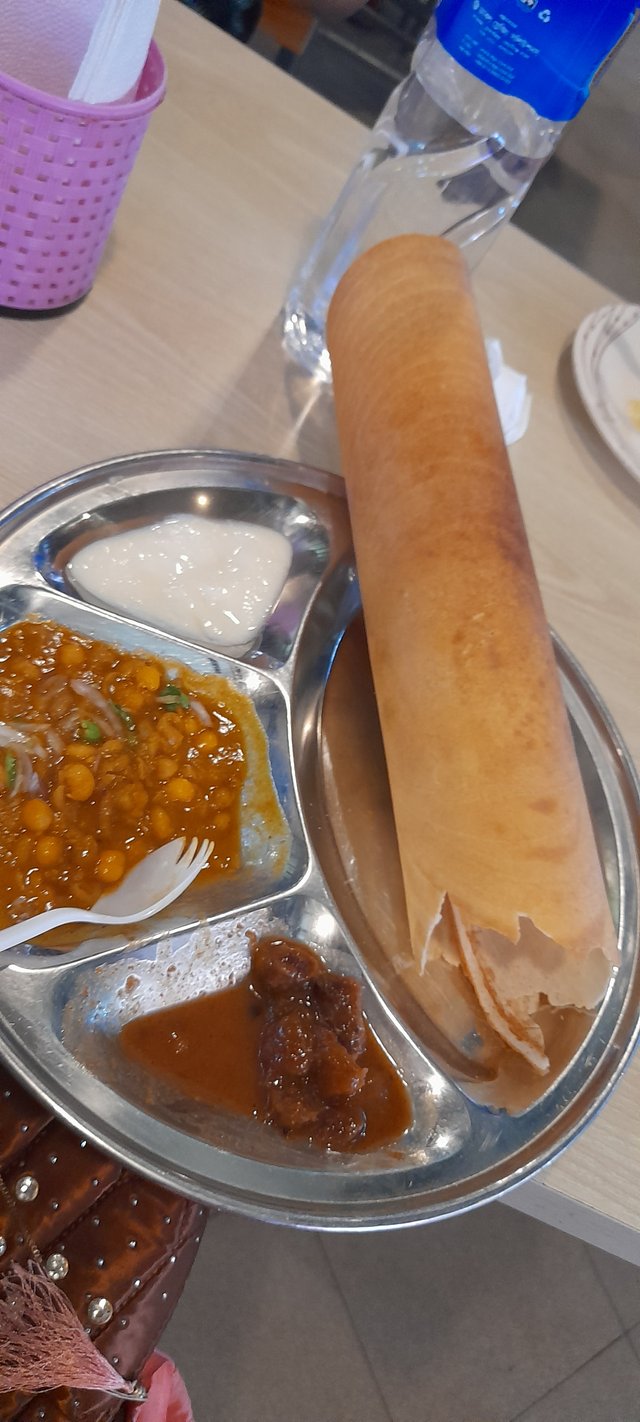Dosa Recipe Simple and Delicious

Dosa is a popular traditional South Indian dish that has gained popularity worldwide. It is a type of thin, savory pancake made from a fermented batter primarily consisting of rice and black lentils (urad dal). Dosa is a staple food in South Indian cuisine and is commonly eaten for breakfast, lunch, or dinner.
The preparation of dosa involves soaking rice and lentils separately, grinding them into a smooth batter, and then fermenting the batter overnight or for a few hours. The fermentation process gives dosa its characteristic tangy flavor and light, crispy texture.
To make dosa, the fermented batter is spread thinly on a hot griddle or tawa and cooked until it turns golden brown and crispy. It is typically served hot with a variety of accompaniments such as coconut chutney, sambar (a lentil-based vegetable stew), and different types of chutneys or pickles. Dosa can also be filled or stuffed with various fillings like spiced potatoes, paneer (Indian cottage cheese), or mixed vegetables to make it more substantial and flavorful.
Dosa comes in different variations, each with its own unique taste and texture. Some popular types of dosa include:
Plain Dosa: The basic form of dosa, made with the rice and lentil batter.
Masala Dosa: A crispy dosa with a filling of spiced potatoes, onions, and sometimes other vegetables.
Onion Dosa: Dosa with finely chopped onions mixed into the batter, giving it a slightly sweet and savory flavor.
Mysore Masala Dosa: Similar to the masala dosa, but with a spicy red chutney spread on the inside of the dosa before adding the potato filling.
Rava Dosa:Made with semolina (rava) instead of rice, giving it a unique texture and crispy edges.
Dosa is not only delicious but also relatively healthy as it is low in fat and rich in carbohydrates and protein. Its popularity has made it widely available in Indian restaurants and even street food stalls around the world, where it is enjoyed by people of different cultures and backgrounds.here is simple and delicious dosa recipe.
| Quality | Ingredients |
|---|---|
| 2 cups | dosa rice (or regular rice) |
| 1/2 cup | urad dal (split black lentils) |
| 1/4 cup | poha (flattened rice, optional) |
| 1/2 teaspoon | fenugreek seeds (optional) |
| Salt to taste | |
| Water (as needed) | |
| Oil or ghee (clarified butter) for cooking |
Instructions:
Wash the dosa rice and urad dal separately under running water until the water runs clear. Soak them in water for about 6-8 hours. If using fenugreek seeds, you can soak them along with the urad dal.
After the soaking time, drain the water from the rice and dal. Rinse the poha under running water and add it to the drained rice.
In a blender or mixer, grind the soaked rice, poha, and fenugreek seeds (if using) together. Add water gradually to get a smooth batter consistency. Transfer the batter to a large bowl.
Next, grind the soaked urad dal with some water until you get a smooth and fluffy consistency. It may take a few minutes of grinding. Add this ground dal to the rice batter.
Add salt to the batter and mix well. The consistency of the batter should be slightly thick but pourable. If needed, you can add a little water to adjust the consistency.
Cover the bowl with a lid or cloth and let the batter ferment overnight or for about 8-12 hours. Place it in a warm place to aid fermentation. The batter should rise and become slightly frothy.
Once the batter is fermented, give it a gentle stir. If the batter is too thick, you can add a little water to adjust the consistency.
Heat a tawa (griddle) or a non-stick pan on medium heat. Once the tawa is hot, sprinkle a few drops of water on it. If the water sizzles and evaporates immediately, the tawa is ready for making dosas.
Take a ladleful of batter and pour it in the center of the tawa. Using the back of the ladle, spread the batter in a circular motion to form a thin dosa. You can make it as small or large as you prefer.
Drizzle a little oil or ghee around the edges of the dosa. Let it cook on medium heat until the edges turn golden brown and crispy, and the dosa gets cooked through.
Once cooked, gently lift the dosa from one side using a spatula and fold it into half or roll it into a cylinder.
Repeat the process with the remaining batter, making dosas one at a time. Remember to stir the batter before making each dosa.
Serve the dosas hot with coconut chutney, sambar, or any other accompaniments of your choice. Enjoy your homemade dosas!
Note: The fermentation time may vary depending on the temperature and climate. In warmer climates, fermentation may happen faster, while in colder climates, it may take longer.